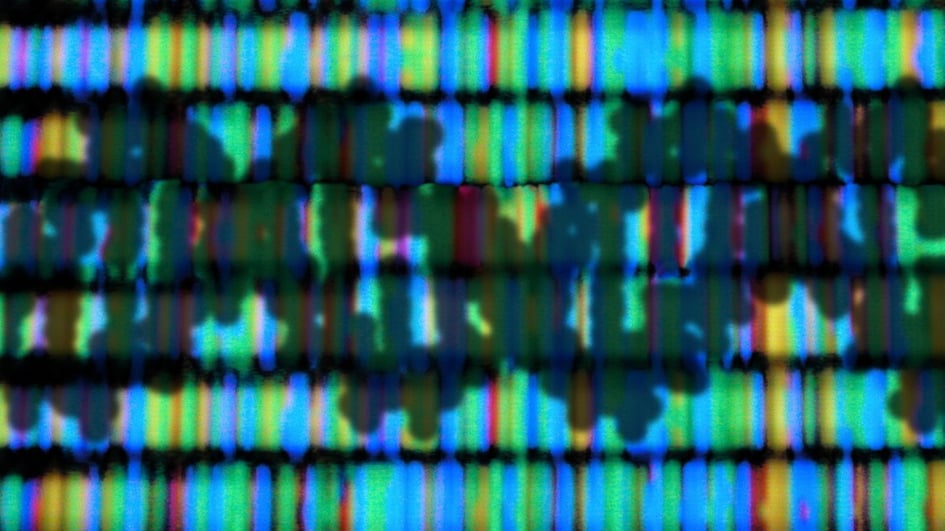How we’re exploiting the DNA damage response pathway
More than 60 years ago, we provided the first conclusive evidence that the fundamental cause of cancer is damage to our DNA.
The DNA damage response is a series of pathways used by cells to repair this DNA damage. By better understanding how our cells repair themselves after they are damaged, we can pick out weaknesses that might be exploited by new cancer therapies.
 Image: Shadow of a DNA double helix on a background that shows the fluorescent banding of the sequencing output. Credit: Peter Artymiuk.
Image: Shadow of a DNA double helix on a background that shows the fluorescent banding of the sequencing output. Credit: Peter Artymiuk.
Every day the DNA in our cells is exposed to thousands of physically damaging events.
If the damage is not repaired it can build up, making the cell more unstable and more prone to developing mutations, the prelude to cancer. DNA damage is normally detected by a cell through its network of hundreds of surveillance proteins that monitor and repair the damage.
This network is called the DNA damage response (DDR).
Exploiting cancer’s weaknesses to unlock new treatments
Many of our researchers are advancing the understanding and targeting of the DNA damage repair system. Here are some of the ways they are doing that:
Cancer cells often acquire defects in their DDR pathways (or sometimes they are inherited e.g. BRCA1 and BRCA2), making them more reliant on other DNA repair pathways. Sometimes we can block these alternative pathways as seen with PARP inhibitors such as olaparib. This is an example of ‘synthetic lethality’.
Treatments such as radiotherapy kill cancer cells by damaging their DNA. We can block some cancer cells from repairing this DNA damage using radiosensitisers, making the cells sensitive to radiotherapy again.
Some DDR pathways are used by cancer cells to repair the damage caused by cancer drugs, if we can block these pathways with chemosensitisers then we may be able to make the cancer sensitive to cancer drugs again.
Radiotherapy and DNA damage
Professor Jessica Downs is investigating how the DNA damage response works in healthy cells and how they can become defective in cancer. Dr Navita Somaiah is leading work to understand how cells respond to damage caused by radiotherapy.
At a recent Discovery Club event Professor Downs and Dr Somaiah spoke about their complementary research to understand the way cells repair damage to their DNA, and how this can be exploited as a weaknesses that could open up new venues of treatment.
Dr Somiaiah says “Targeting the DNA damage response could sensitise cancer cells that are resistant to radiotherapy, which could be a great benefit to patients.”

To find out more about cancers of unmet need and to support our research, please contact Hannah Joyce, Deputy Director of Philanthropy.